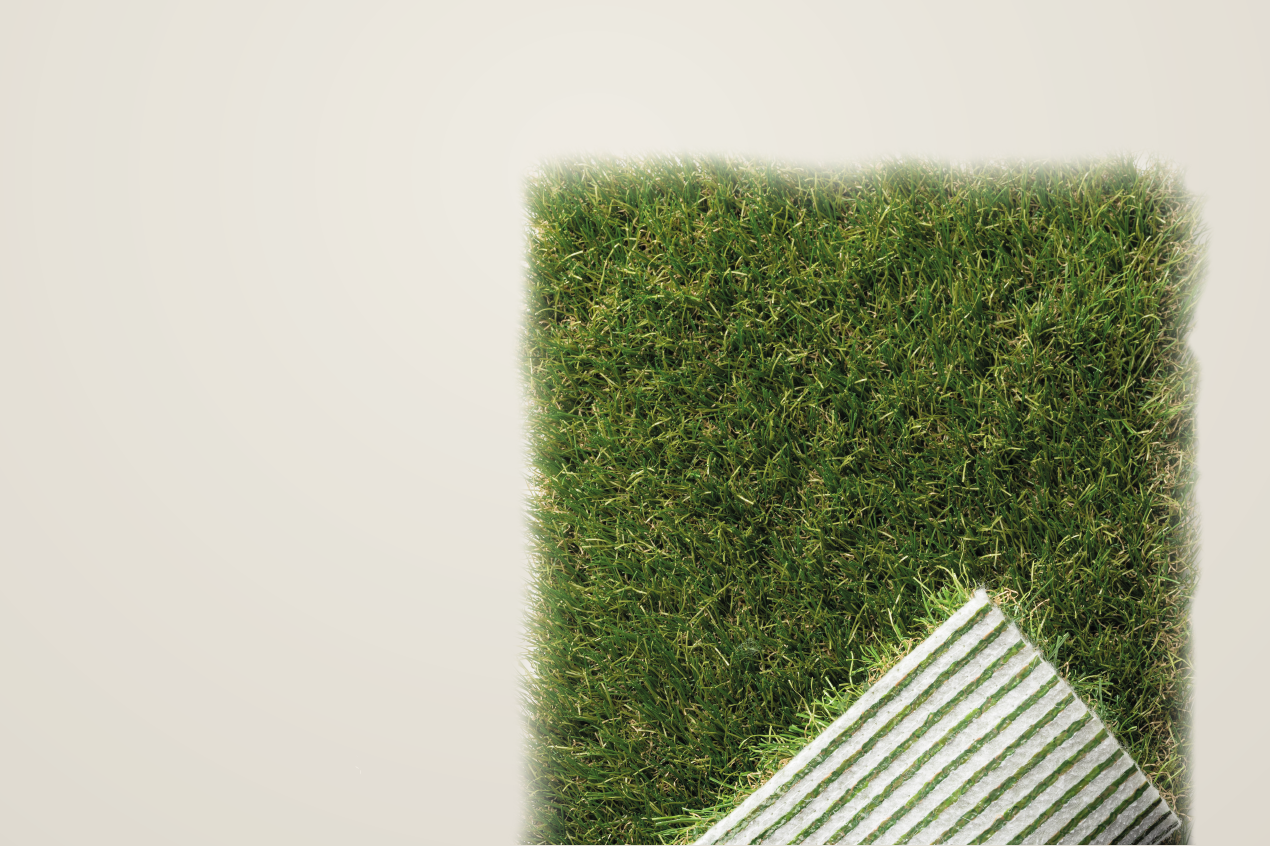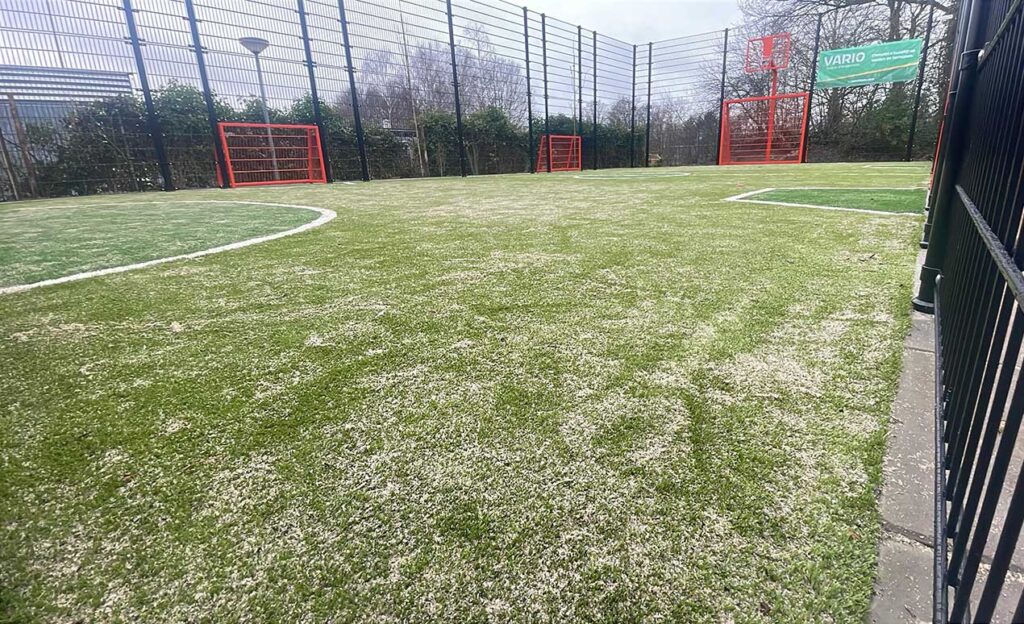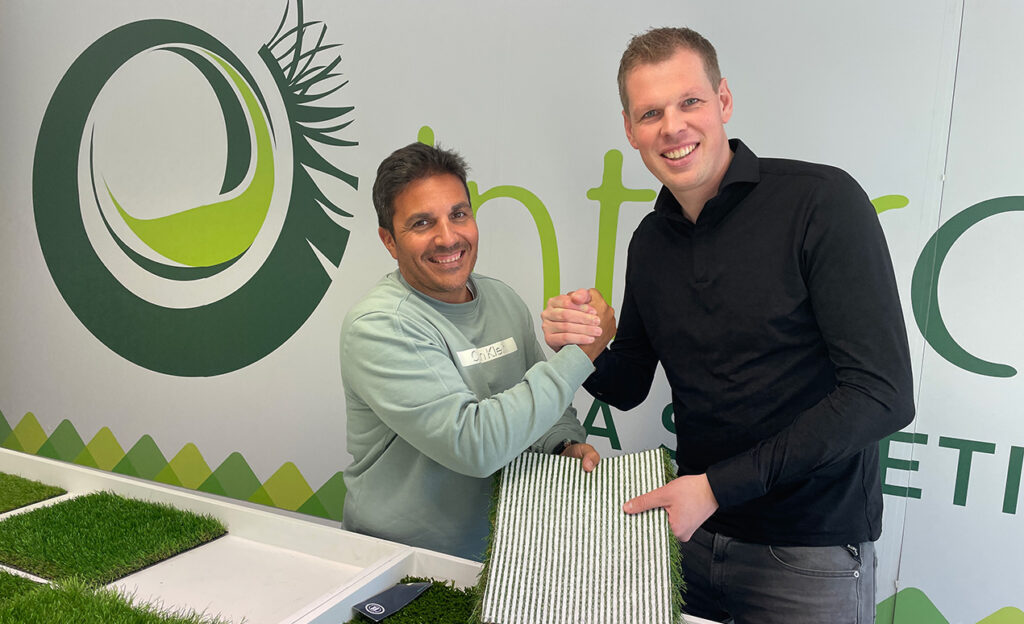LimeGreen’s ONE-DNA™ artificial grass is known as a circular product thanks to the use of a single base material: polyethylene (PE). This design facilitates recycling and reuse and offers significant advantages over traditional multi-material artificial grass products. Here we explore the advantages of mono-material versus multi-material and the technical specifications that contribute to the sustainability of ONE-DNA™ circular artificial grass.
Mono-material versus multi-material
Mono-material artificial grass
- Recycling efficiency: Because ONE-DNA™ synthetic grass is made entirely of PE, the material can be easily recycled without the need to separate different polymers.
- No downcycling: Unlike mixed polymers, which are often downcycled into lower value streams, 100% PE can be recycled into higher value applications such as new turf or other PE products.
Multi-material artificial grass
- Complex separation: Traditional synthetic turf uses different polymers for the fibres and backing, which makes separation and recycling at the end of its life difficult. Mechanical recycling of mixed polymers often results in inferior materials.
- Lower value: Multi-material turf often ends up as inferior recyclate suitable for less critical applications, contributing to waste and loss of valuable materials.
Difference in Melting Point and Recycling
Melting point and Recycling issues
- Melting points of Polymers: Different polymers have varying melting points, causing complications during the recycling process. When materials with different melting points are melted together, they cannot mix well, resulting in a heterogeneous material with reduced mechanical properties.
- Advantages of PE: PE has a consistent melting point, resulting in a homogeneous material that makes it easier and more efficient to recycle without loss of quality. This uniform melting point avoids the problems encountered when processing multi-material artificial turf, where varying melting temperatures lead to poor material bonding and lower product quality.
Environmental Product Declaration (EPD)
ONE-DNA™ circular artificial grass is backed by an Environmental Product Declaration (EPD), which assesses the product’s environmental impact throughout its life cycle. This declaration highlights the product’s sustainability performance and low environmental footprint.
- Lower Environmental Impact: By using a single material and avoiding harmful substances, ONE-DNA™ circular artificial grass minimises emissions and waste during production, use and end-of-life disposal.
- Long-term Durability: Tests show that the material barely degrades after years of exposure to UV radiation, temperature changes and moisture, extending its lifespan and reducing the need for replacement.
Circular artificial grass
ONE-DNA™ circular artificial grass from LimeGreen represents a progressive step towards sustainable, circular products. The use of mono-material PE ensures efficient recycling, preservation of material value, and minimal environmental impact. With a strong EPD and proven durability, ONE-DNA™ circular artificial grass offers a robust, eco-friendly solution for both commercial and residential applications.

































